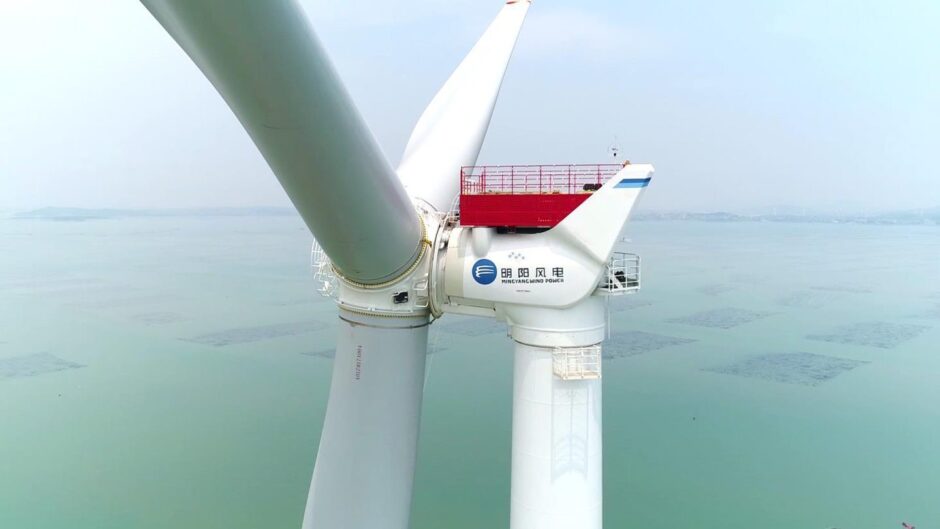
Support for a Chinese wind turbine manufacturer has drawn criticism, with commentators warning it could risk undermining Scotland’s energy security.
The Scottish Offshore Wind Energy Council (SOWEC) added seven fresh projects, including the Mingyang facility, to the list of Stage 2 Strategic Investment Model (SIM) – a process to align supply chain with developers’ plans for the huge ScotWind leasing round.
Mingyang’s presence on the SIM programme has proven controversial, raising concerns about the negative impacts it could have on Scotland’s energy security and relationships with European turbine OEMs.
UK politicians have previously warned about China’s role in the North Sea, saying it poses a threat to the country’s security. And relations between the two countries have soured over UK Government claims that China-linked threat actors targeted several politicians and the Electoral Commission.
If the project proceeds, it would mark the first turbine manufacturer facility built in the UK. Reports have previously suggested Vestas may be considering building a facility in Scotland.
Industry commentator Dick Winchester said: “If we invite the Chinese in, it will be the opportunity they’re looking for to establish a base here and undermine European wind turbine companies – then those countries and probably the entire EU won’t be our friends for long.”
Mingyang recently partnered with Opergy Group as it seeks to find potential spots to house manufacturing facilities for its turbines and foundations.
In February, offshore supply chain expert James Glennie warned of the risk of China stealing IP and the risk of Mingyang specifically being a “black mark for Socltnad’s relations with Europe”.
Collaboration
The SIM projects were chosen to progress from the first stage because of their capacity to support Scotland’s offshore wind deployment and potential for collaboration with developers.
The SIM programme is now planning to facilitate meetings between each of the projects and offshore wind developers as well as bringing them together at a marketplace style event later in 2024.
Over the next few months, offshore wind developers and partners will work collaboratively alongside each project to address how to best support it accelerate forward to be ready in time for offshore wind build out in Scotland.
The SIM seeks proposals for port infrastructure and top tier supply chain projects. Offshore wind developers review the proposals before returning expressions of interest to the SIM identifying which projects they wish to meet with collectively to discuss their supply chain needs.
Priority projects
The full list of ten projects, includes five port facilities, four supply chain proposals and one equipment project. A total of 45 projects applied to the programme, with a further 19 on track to progress into Stage 2.
SOWEC announced the first three priority projects in February 2024 – Port of Nigg, Port of Cromarty Firth and a third supply chain project that requested to remain confidential.
Along with the Mingyang turbine facility, the Burntisland Deep Water FOW Facility, the Port of Aberdeen South Harbour Upgrade, the Scapa Deep Water Quay, the Hunterston HVDC Cables Factory, the Ring Crane Development and another confidential development round out the list of Stage 2 projects.
Gillian Morrison, Supply Chain Development Manager at Crown Estate Scotland, and Chair of the SIM Working Group said: “The Strategic Investment Model is successfully demonstrating that collaboration can help prioritise sector effort and focus. Our next task is to accelerate action to support infrastructure and supply chain growth of chosen projects.”
She added: “In the weeks and months ahead, SOWEC will work alongside the different projects, agencies and offshore wind developers. Our goal is to help each project accelerate and get the confidence it needs to reach final investment decision and commit to growth in Scotland. Through this shared ambition we can raise our sights and secure the investment we need for our supply chain.”

